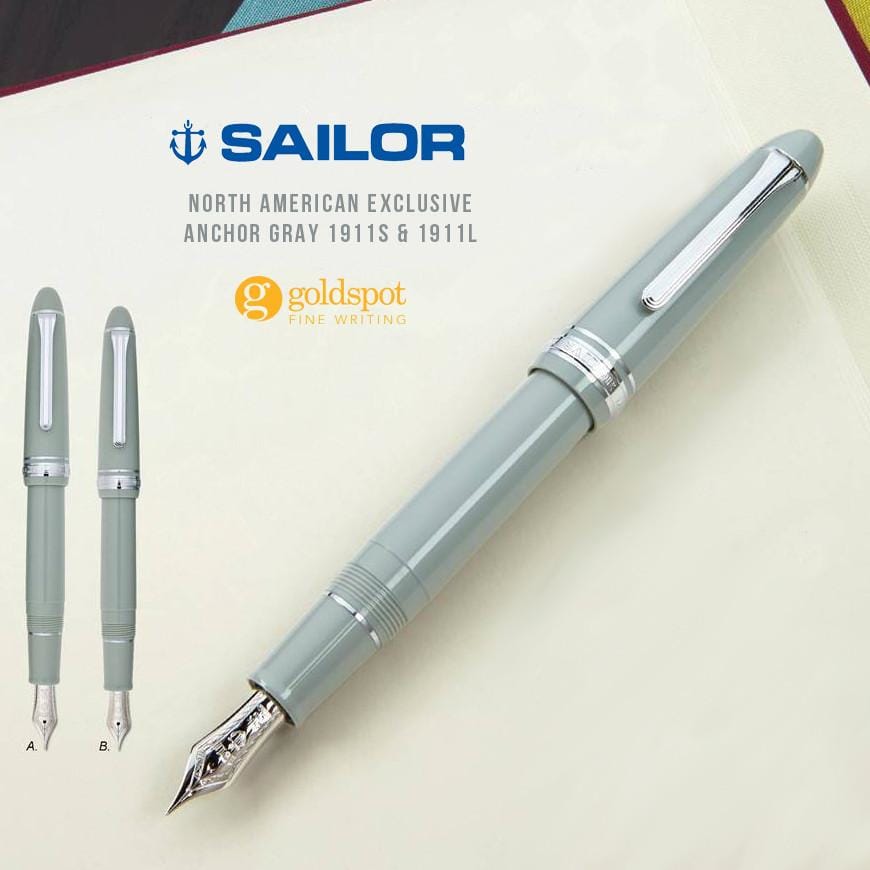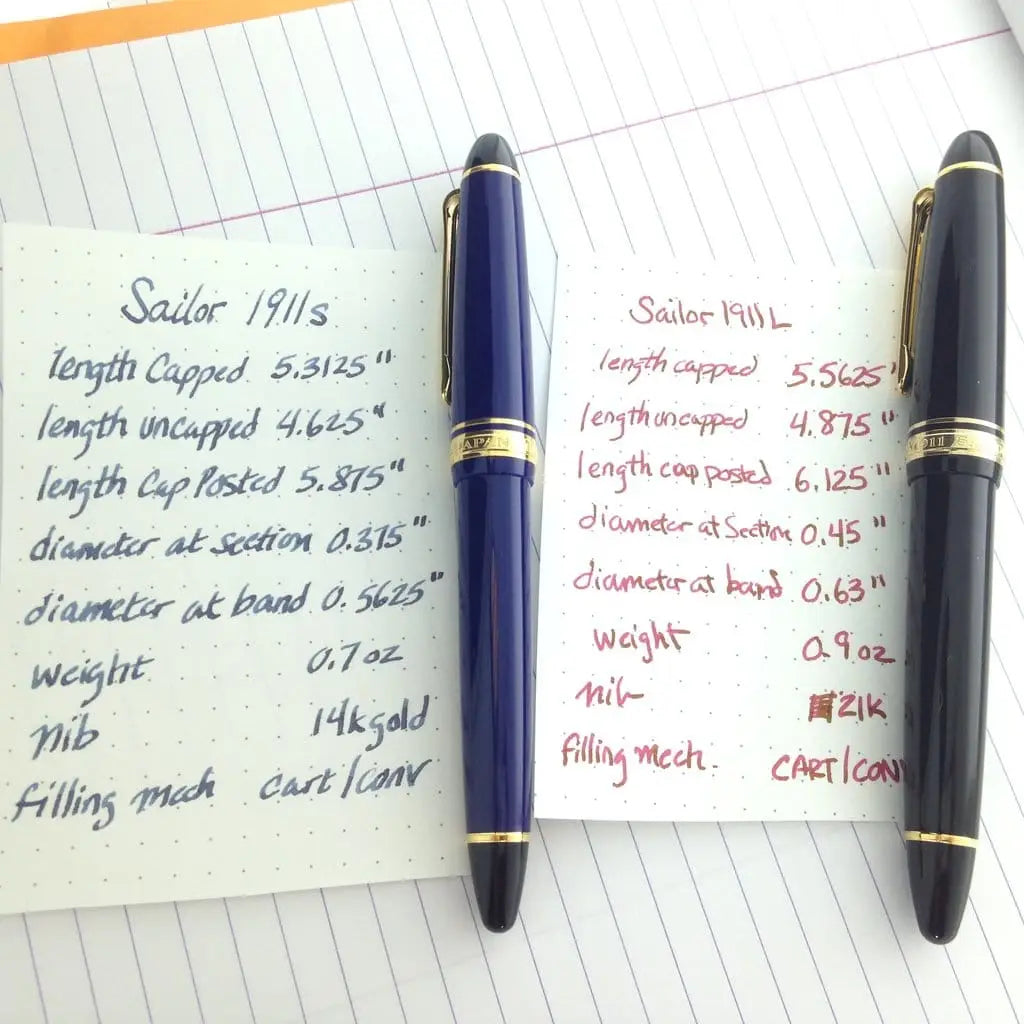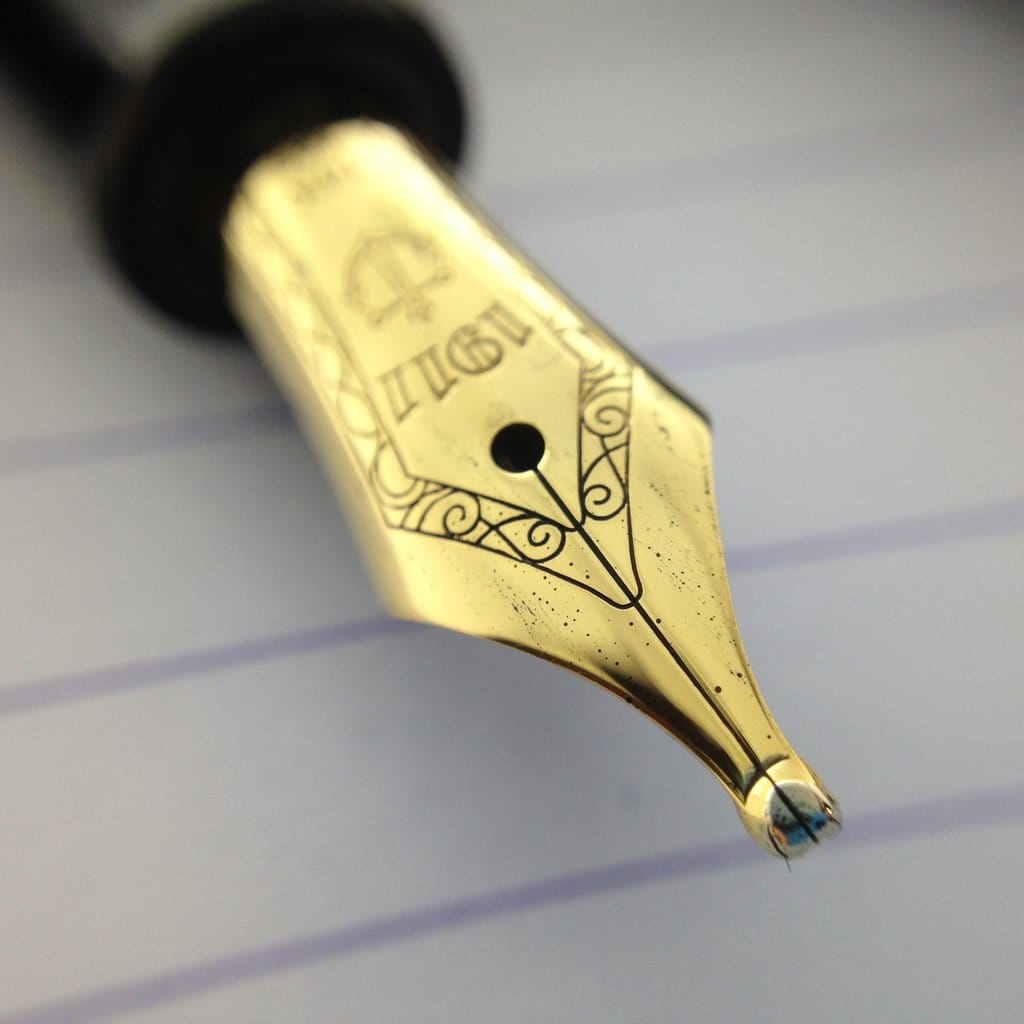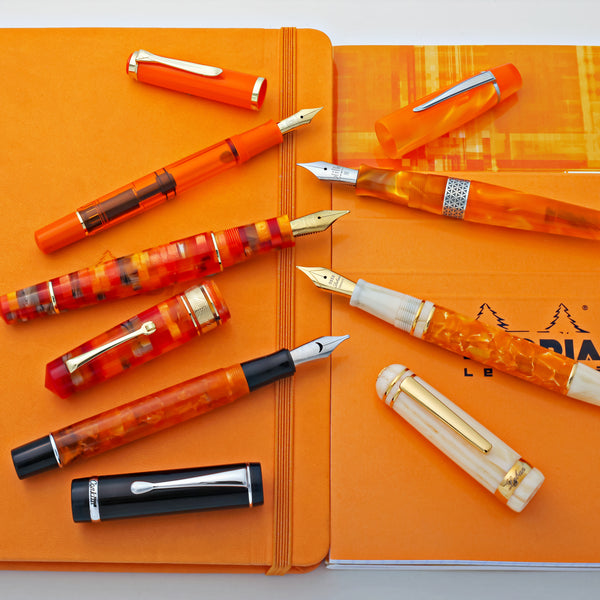Sailor 1911 Fountain Pen Buyer's Guide
Konnichiwa pen pals,
We're excited to talk about the latest Sailor 1911 North American exclusive - Anchor Gray. Sailor pens is following up the baby blue of the Fresca with an elegant gray color that represents the icon of the Japanese pen manufacturer. With two different pen sizes and seven nib sizes, we figured it might be helpful to give you a walkthrough of the 1911 to clear up any burning questions you may have. This is essentially your sailor 1911 buyers guide to help you make an informed decision.

Some of you may be looking into Sailor for the first time. Perhaps you've seen a number of posts on social media or on the /r/fountainpens subreddit that speak high praises of Sailor's writing experience. Well, there is good reason for all the fuss!
The 1911 model is a classic, cigar-shape profile that bears resemblance to the Montblanc Meisterstuck without the snowflake on the cap finial. The pen is crafted from resin through-and-through, giving the pen a light weight in-hand. Depending on the color of the resin, the trims are either gold or silver (rhodium). The pen fills using a proprietary cartridge/converter system. Both ink cartridge and converter are provided with the purchase of any new Sailor 1911 to provide the writer with both options.
In the case of the North American exclusive Anchor Gray and the previous Fresca Blue editions, the trim and nib are coated in Rhodium trims to match the pastel-like tone of the resin.
Picking a Size: Standard vs. Large
The 1911 is available in two sizes: standard and large. Besides the length and girth difference, the most significant upgrade is in the nib. The 1911 Standard (or 1911S) is fitted with a 14kt gold nib. The 1911 Large (or 1911L) is fitted with a 21kt gold nib. The higher gold purity in the Large model provides a slightly softer, more responsive writing experience.

Here's the tale of the tape on each model:
Sailor 1911S Standard
Length Capped : 5.3125"
Length Uncapped : 4.625"
Length with Cap Posted : 5.875"
Diameter at Section : 0.375"
Diameter at Cap Band : 0.5625"
Weight : 0.7oz
Nib : 14k Gold
Filling Mechanism : Cartridge / Converter
Sailor 1911L Large
Length Capped : 5.5625"
Length Uncapped : 4.875"
Length with Cap Posted : 6.125"
Diameter at Section : 0.45"
Diameter at Cap Band : 0.63"
Weight : 0.9oz
Nib : 21k Gold
Filling Mechanism : Cartridge / Converter
Take a hands-on look to see how the 1911 Standard and Large match up with one another in our video comparison below.
In the video, Tom uses a Pelikan M600 to compare against the 1911 Standard. Hopefully, this would help in establishing a point of reference for those who are unfamiliar with the Sailor brand. Although the 1911L is "larger" than the Standard, the size is still quite manageable for both men and women to handle and write with.
Choosing a Nib Size
As with any Sailor fountain pen, the main attraction is the NIB. The Japanese pen maker is dedicated to the finely crafted art of writing. Each nib is given the proper attention to ensure that writing quality is consistent and exceeding expectations. Seven different types of nibs are available standard.
With many pen manufacturers paring down their nib selection to 2-3 choices (usually fine, medium or broad), it might seem a little intimidating that you would have to choose between 7 possible nibs. Hopefully, we can shed some light on the subject so you would be able to make an informed decision on which nib is "write" for you.
In general, Japanese nibs tend to run thinner than their Western counterparts. That means a Western extra-fine is equivalent to a Japanese fine/medium. With that being said, Sailor offers extra-fine, fine, medium-fine, medium, broad, music, and zoom nibs. Watch our nib comparison video below to see these nibs in action and compared with some Western-style nibs to see the subtle differences in line width.
Approximately, this is what you could expect from a Sailor nib if you are familiar with Western nibs:
Western Broad -> Sailor Zoom
Western Medium -> Sailor Broad
Western Fine -> Sailor Medium
Western Extra-Fine -> Sailor Fine
The extra-fine size is so thin, it does not have any Western analog. The Zoom is also a unique offering, as it lays down a different line width based on the angle that the nib touches the paper. Writing at an acute angle produces the thickest, wettest line possible, which is thicker than the Sailor broad. Writing at an angle that is perpendicular to the page will yield a line of medium thickness.
The Music nib is not a traditional, three-tined music nib. It does have a thick downstroke that results in the broadest line possible with a Sailor pen, while the horizontal line is a thinner, medium size. Although the original intention of the Music nib is to write music, most writers who opt to own one of these pens seldom use it for that purpose. The shape of the nib instantly gives your handwriting a flair of line variation it did not have previously. The nib performs beautifully upside down as well, laying down a drier, thinner line for more concise writing.
Some comments you may read online about Sailor nibs characterize them as having "feedback" or being "scratchy." Of course, ratings and user reviews should be taken with a grain or two, but there is some truth to be had in those statements. The most accurate description I've heard is that the nibs have pencil-like feedback. So, if you love a nib that glides across the page like glass, then you may want to reconsider investing in a Sailor. Also keep in mind that the feedback is going to be more noticeable with the finer point nib sizes.

Is the 21kt Upgrade Worth It?
Many new writers ask if the upgrade to a higher degree of gold content is worth the additional expense. Without being able to handle both the 14kt and the 21kt, it's going to be hard to make that determination. The difference can be detected by an experienced hand, for sure. If you are making the jump from writing with stainless steel to gold nibs, then the upgrade may not be as impactful as you may think.
Remember, the 14kt is only installed on the 1911S and the 21kt only on the 1911L. So, if your preference in pen size overrides other writing "needs," then you won't have much choice in the matter. However, if you're flexible with the size of the pen and this is your first Sailor, the 1911 Standard is a great option to get started because you can save the difference in cost to purchase another Sailor when a new color finish drops.
If you've already experienced other gold nibs, and you have the budget to splurge, then the 21kt gold is definitely worth the investment. You won't be disappointed with the writing quality.
We hope that this guide will help you make your decision in choosing a Sailor 1911 pen. If you have a Sailor, we'd love to read your comments below. Let us know which you prefer and why.



